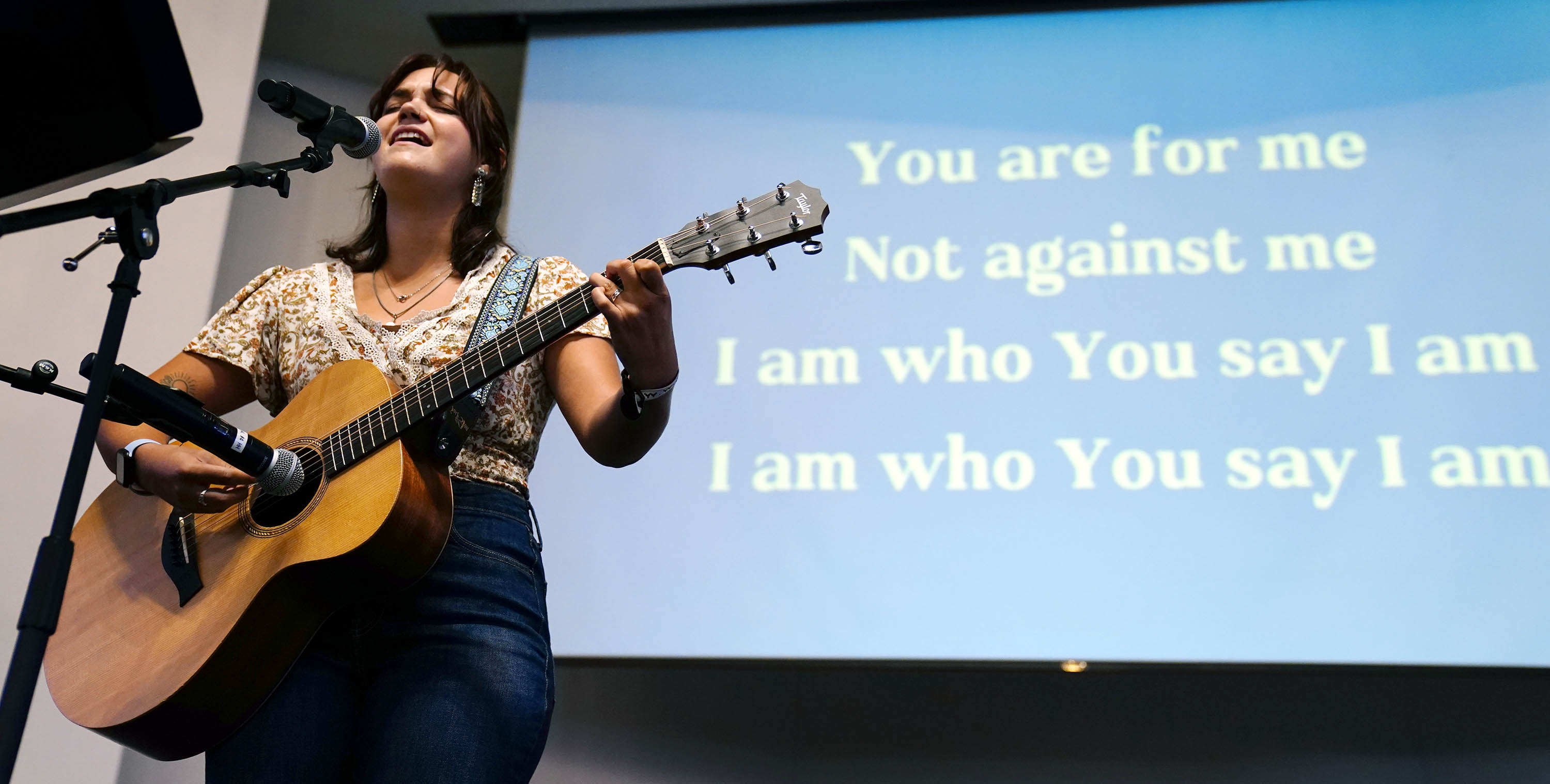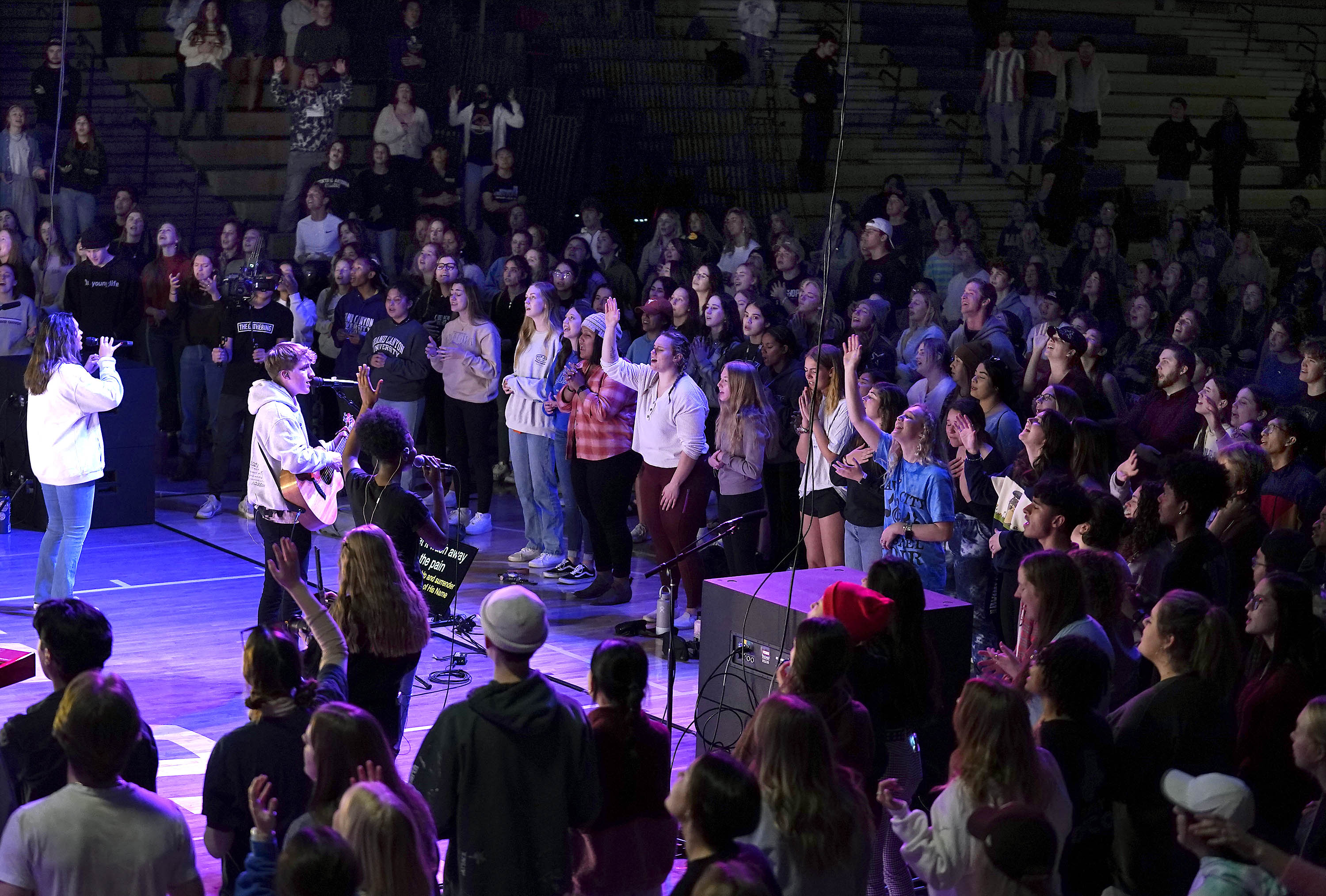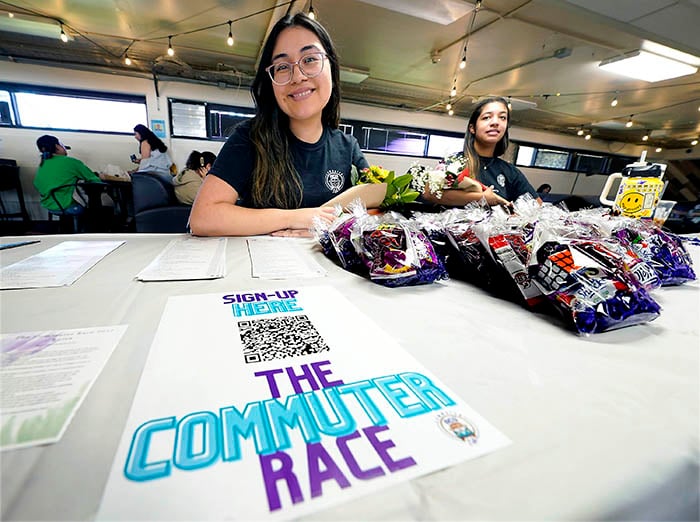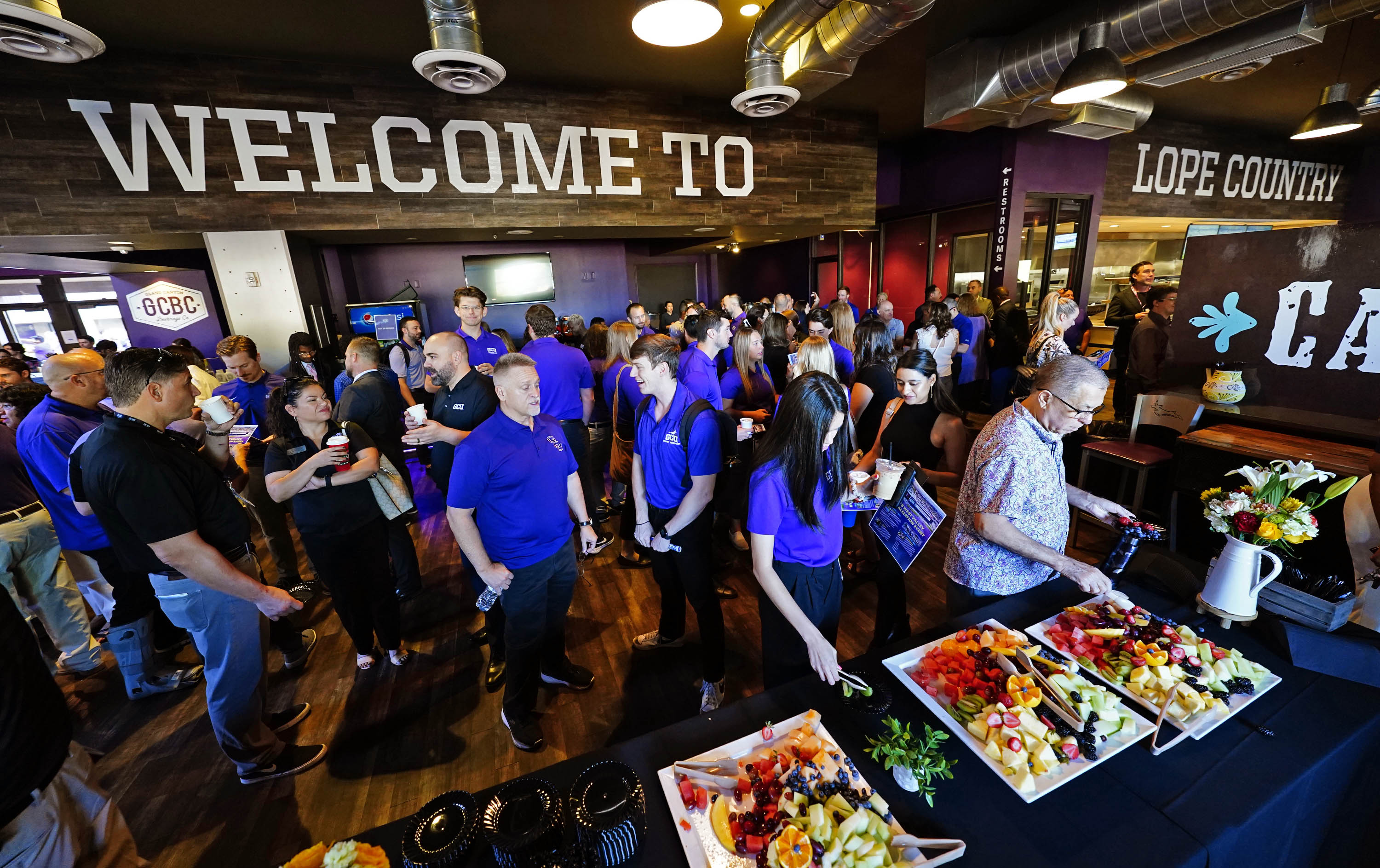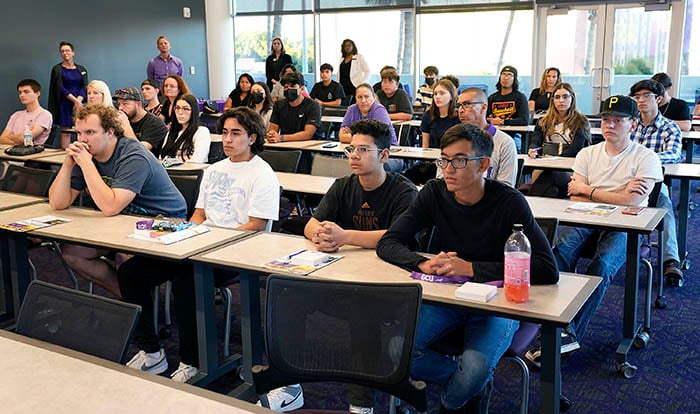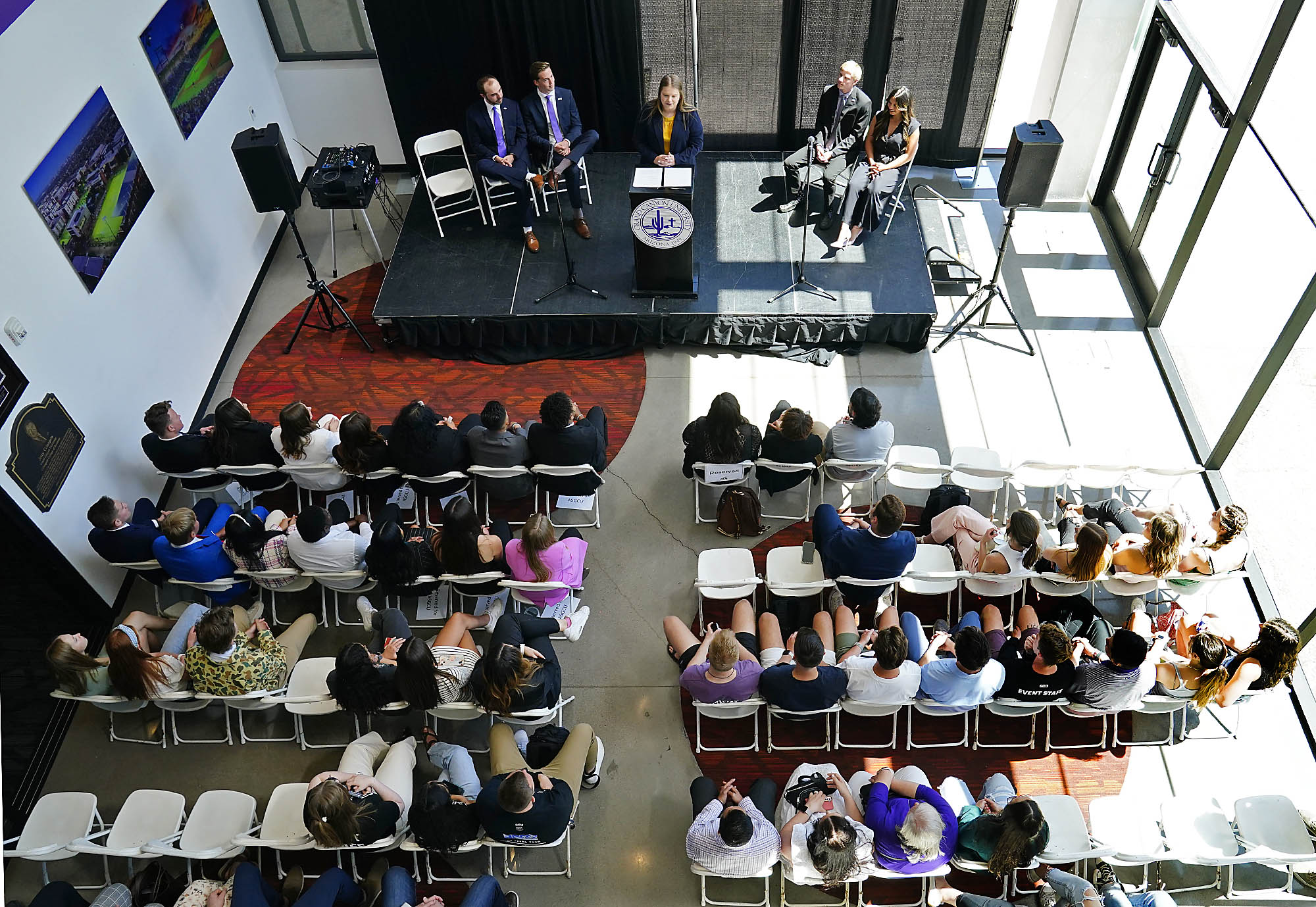
Editor’s note: This story is reprinted from the April issue of GCU Magazine. To view the digital version of the magazine, click here.
By Ashlee Larrison
GCU Magazine
When people think of an online class, they usually imagine email exchanges with their professors, prerecorded lectures and a sometimes lonely independent-learning environment.
That’s not the case in Grand Canyon University’s state-of-the-art online program, and in recent years some instructors have added another tool to enhance the learning experience.
Loom is a Google Chrome extension that allows its users to create quick videos (whether you’re recording yourself, your monitor or both together), enabling professors and students to communicate quickly and effectively. Professors can send videos to their students, answering questions and aiding in a better understanding of the material, and it also can be used for grading and offering feedback to students.
Students, in turn, also can send video responses and presentations to their professors rather than typing their responses. Students then can view feedback alongside their graded assignment to gain a better understanding of their grade.
Rick Holbeck, Executive Director of Online Full-Time Faculty, has received a lot of feedback about Loom from both instructors and their students. He likes what he’s hearing.
“It’s all positive,” he said. “They especially like to see the instructor’s face with the grading so that they know it’s a real person that’s actually touching their homework.”
For faculty and instructors, Holbeck said, it creates a more “efficient” learning experience for their students.
What started as a discovery made by a member of GCU’s online faculty has organically grown to a platform implemented steadily throughout numerous online courses and programs.
GCU online instructor Brian Clark has been using Loom for about a year and has since become an advocate for the platform among his colleagues.
“I think the big benefit to using Loom in an online platform is that it helps to bridge that gap between ground and online learning,” Clark said. “It’s super easy for online learning to be impersonal, it’s super easy to feel isolated in online learning and I think by incorporating these Loom videos, you help to mitigate some of those feelings, especially when we’re dealing with students who are in their first class or the first time ever taking online classes.”
Clark has seen a noticeable increase in the amount of information students include in their assignments using Loom. Before he implemented Loom into his course, he recalls receiving about a page or page and a half in speaker notes and about 12 to 15 PowerPoint slides from students submitting presentations for him to grade. Now with the ability to submit Loom videos straight to their professor, Clark receives 15- to 25-minute video presentations along with 15 to 20 slides.
“The students are just getting far more learning out of it,” Clark said. “They get more out of the assignment.”
Online instructor Dr. Seanan Kelly is also an avid Loom user and believes one of the biggest benefits students have through using Loom is their ability to “go back and forth” between their grade on their papers and their feedback rather than the “linear fashion” of reviewing documents.
“You’re going out of order, but the discussion is happening right in front of you, so it doesn’t appear out of order,” Kelly said. “They’re just sitting right alongside you as you review a document and respond to various queues on the paper.”
Kelly believes that the amount of use Loom users receive is based on the amount of discipline they have toward using the platform to its full capacity and how willing they are to take advantage of it.
“The tool itself is only as effective (as) how we’re going to leverage its use,” Kelly said.
Kelly’s students are just a few of the many who have offered a positive response to the implementation of Loom. One of those students is Tera Bisceglia.
“It’s a really neat way to communicate with your professor if you’re strictly taking an online program,” Bisceglia said.
Bisceglia recalls a time in which one of her Loom professors made two instructional videos for her after noticing her struggle to understand the APA template. She remembers thinking the experience was “awesome” because she was able to receive feedback in real time.
Online instructor Marnie Davis uses Loom to add an extra personal touch to her classroom engagement.
“I do welcome videos specific to each student, so not just a generic welcome video,” Davis said. “The overwhelming feedback I get is that they really appreciate personal touch. It makes them feel more like they’re in a physical classroom because they can see me and hear me.”
It’s just another way that GCU’s program buries the stigma of the traditional online classroom. GCU online educators use various technologies to bridge the divide between the online world and traditional classrooms.
Holbeck sees the potential in Loom’s continual growth within GCU’s online program.
“Those that do use it think this is one of the best tools they’ve found in a long time,” Holbeck said. “I don’t see it going away anytime soon.”
ADVANTAGES OF LOOM
For instructors:
Instructional videos for reference
Can directly answer students’ questions
Able to explain grading more effectively
More effective feedback for students
Personalized videos for individual students
For students:
Better feedback from instructor
Able to respond directly to instructor
Better understand grades and feedback
Communication can be private
Contact Ashlee Larrison at (602) 639-8488 or [email protected].
****
Related content:
GCU Today: Online graduates share stories worth celebrating
GCU Today: GCU grad rates hit 58% for traditional students, 65% online
GCU Today: GCU: Voice of authority in online education











